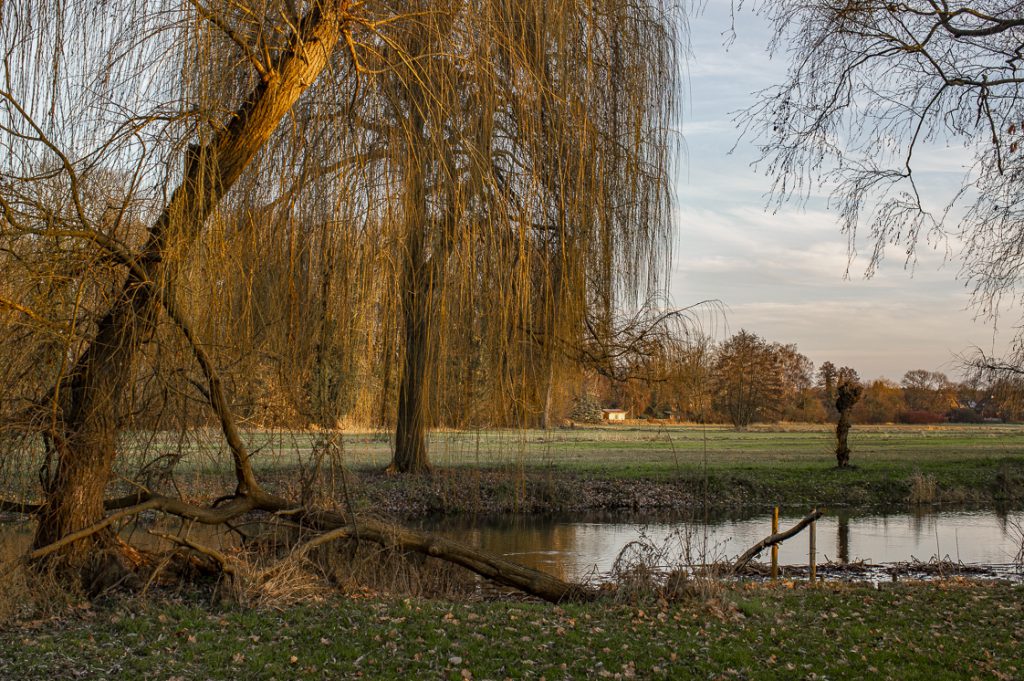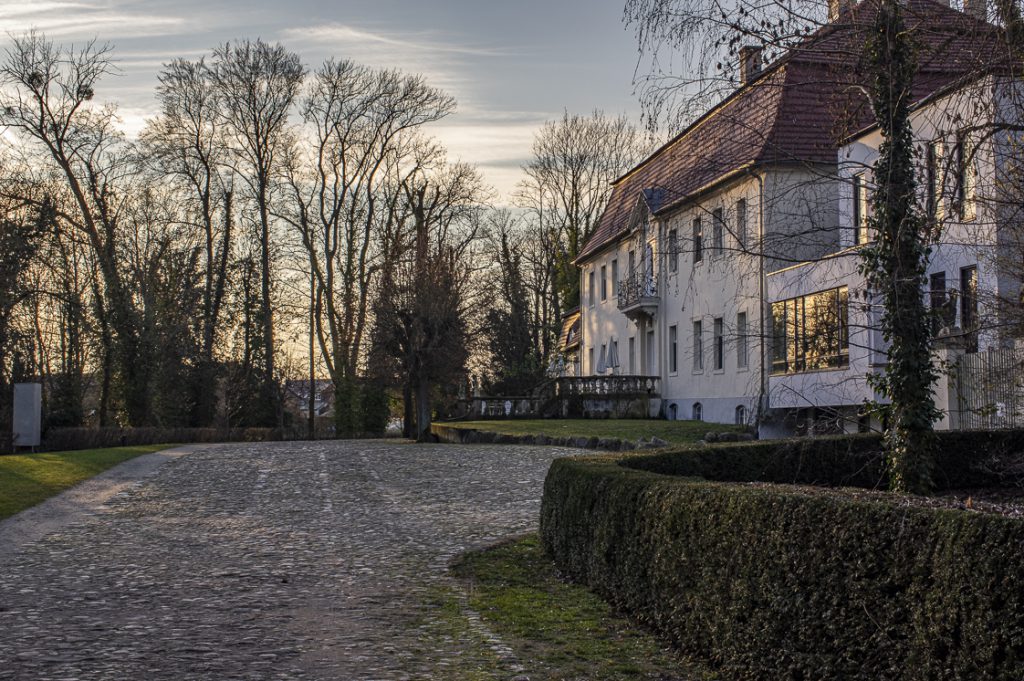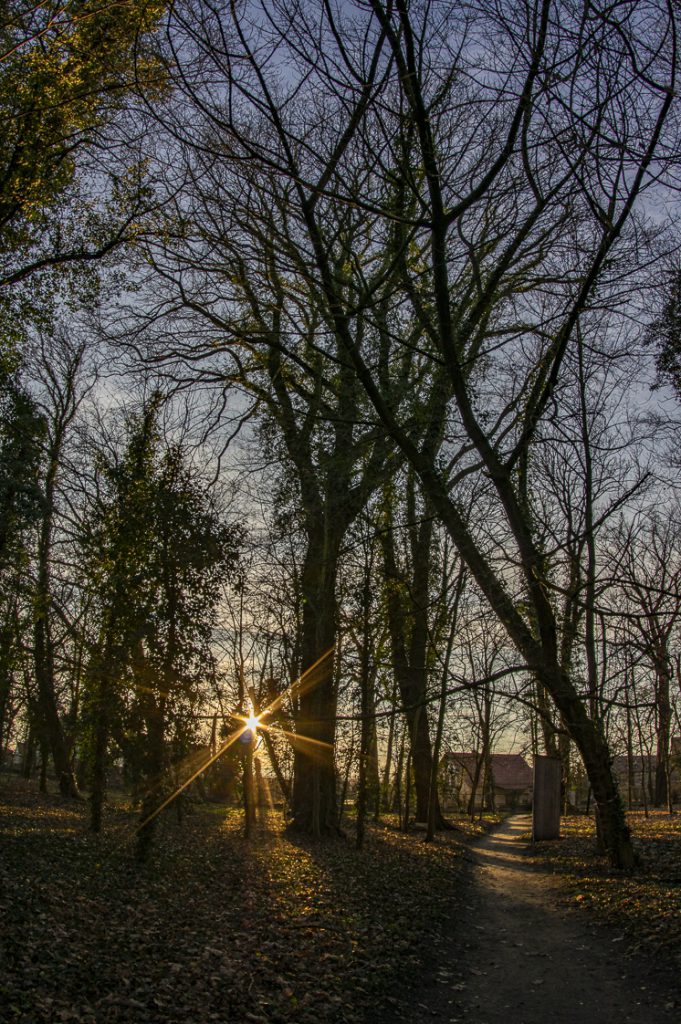Hidden beauty
January’s afternoon sun shed it’s light into the greyish garden and greenery. Trees whispered of spring, hopefully. But the river were holding it’s breath, still afraid of returning ice.
Enter the garden through an romantic iron gate and follow the pathways to the white bridges which cross that little venicelike hideaway of islands and riparian rivershores. Neoclassical sculptures hide in wooden boxes sheltered or freezing days and nights.
A garden with rooms
In warmer times busts and sculptures peep at visitors strolling through the garden’s rooms which were developed by writer Hermann Sudermann who lived permanently in the masion from 1902 onwards. The garden was originally created by famous prussian gardener Peter-Joseph Lenné in the 19th century. Sudermann however built closed areas around a temple and a small roman palace, installed roman busts and marple benches, creating an ancient mediteranean atmosphere. He only forgot to bring mediteraniean weather to the estate.
In winter the Sudermannpark, which is the official name of the garden, lacks italian flair but invites you to a walk under beautiful silhouettes of old trees in the wide land of Mark Brandenburg.
Die Gartenlaube
From the square of his aboretum in which we’d been promenading over and over again, we’d been glancing at Scotch pine forests, reeded lakes and sandy grounds, from which even at deep blue skies yields a quiet demure up to the lowlands where at the far away horizon, quivered by a tempest blaze, lead colored, hazy blue sounds of fog levitate between heaven and earth.
quoted after Die Gartenlaube (1899). Ernst Keil’s Nachfolger, Leipzig 1899, Seite 121. Digital Text at Wikisource. Translation by me.
Hermann Sudermann was a regularly publisher in the „Gartenlaube“ (gazebo/small loggia), himself a garden lover. The small loggia he described in one of his contribution to „Die Gartenlaube“ became a roman domus in his own garden. It still inherits his garden.
Rudolph Stratz, a writer himself, summarized his meeting with Sudermann in the garden, while Sudermann introduced him to one of his new plays, „The Three Heronfeathers“, in 1897.
Sudermann’s literary and dramatic work has been widely forgotton. But his garden concept outlives him until today.











